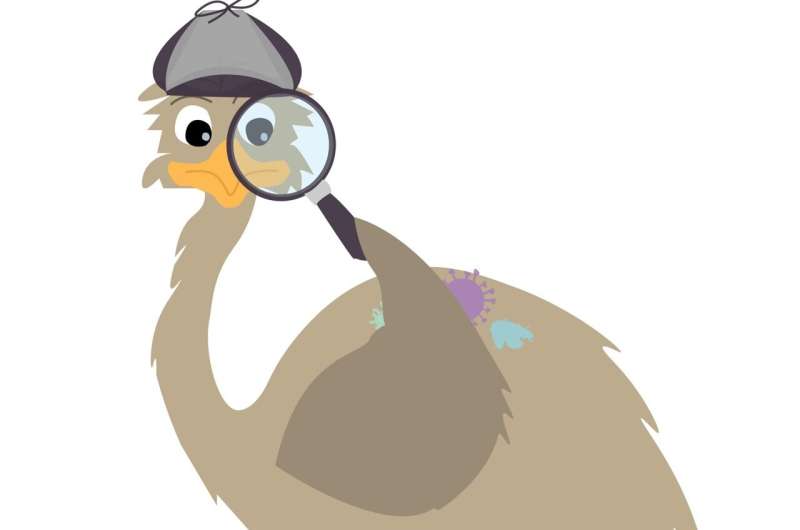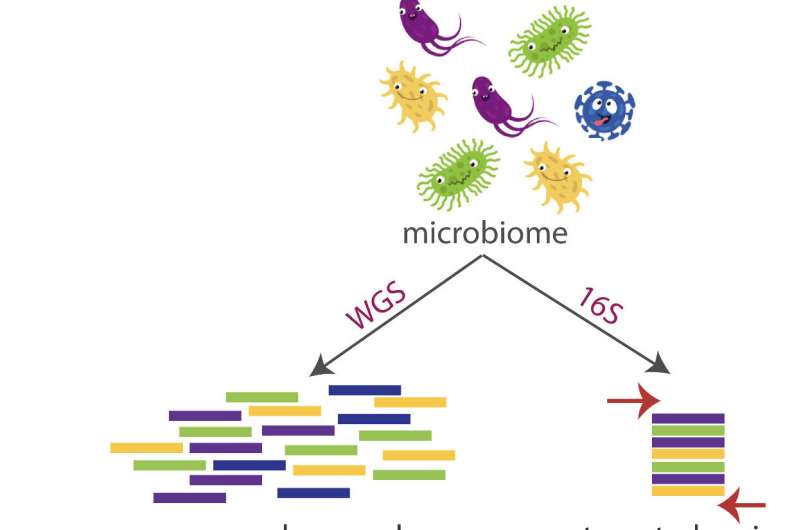Emu software uses common gene to profile microbial communities

Aspect of a gene is far better than none when determining a species of microbe. But for Rice College laptop experts, part was not approximately plenty of in their pursuit of a method to establish all the species in a microbiome.
Emu, their microbial community profiling computer software, effectively identifies bacterial species by leveraging extended DNA sequences that span the total duration of the gene beneath review.
The Emu challenge led by laptop scientist Todd Treangen and graduate student Kristen Curry of Rice’s George R. Brown College of Engineering facilitates the investigation of a crucial gene microbiome scientists use to kind out species of micro organism that could be harmful—or helpful—to people and the natural environment.
Their focus on, 16S, is a subunit of the rRNA (ribosomal ribonucleic acid) gene, whose usage was pioneered by Carl Woese in 1977. This region is extremely conserved in germs and archaea and also includes variable areas that are vital for separating unique genera and species.
“It truly is typically made use of for microbiome investigation because it is present in all germs and most archaea,” claimed Curry, in her 3rd calendar year in the Treangen team. “Mainly because of that, there are regions that have been conserved in excess of the several years that make it easy to focus on. In DNA sequencing, we will need parts of it to be the exact in all bacteria so we know what to look for, and then we will need elements to be diverse so we can inform microbes apart.”
The Rice team’s review, with collaborators in Germany and at the Houston Methodist Study Institute, Baylor College of Medicine and Texas Kid’s Medical center, appears in the journal Character Techniques.

“Years ago we tended to concentration on poor bacteria—or what we believed was bad—and we failed to actually care about the many others,” Curry mentioned. “But there is certainly been a change in the past 20 several years to exactly where we think perhaps some of these other microorganisms hanging out indicate one thing.
“That’s what we refer to as the microbiome, all the microscopic organisms in an natural environment,” she claimed. “Frequently examined environments consist of h2o, soil and the intestinal tract, and microbes have proven to have an impact on crops, carbon sequestration and human wellness.”
Emu, the title drawn from its undertaking of “expectation-maximization,” analyzes complete-size 16S sequences from germs processed by an Oxford Nanopore MinION handheld sequencer and works by using complex error correction to recognize species based mostly upon 9 distinctive “hypervariable regions.”
“With past know-how we could only browse part of the 16S gene,” Curry stated. “It has about 1,500 foundation pairs, and with short-go through sequencing you can only sequence up to 25%-30% of this gene. Nevertheless, you really need the whole-length gene to achieve species-level precision.”
But even the most recent technological innovation isn’t great, allowing for problems to slip into sequences.
“Even though error rates have dropped in current decades, they can still have up to 10% error inside of an particular person DNA sequence, whilst species can be separated by a handful of differences in their 16S gene” mentioned Treangen, an assistant professor of laptop or computer science who specializes in monitoring infectious illness. “Distinguishing sequencing mistake from legitimate dissimilarities represented the primary computational obstacle of this exploration venture.
“Just one problem is that a great deal of the error is nonrandom, this means it can occur continuously in distinct positions, and then get started to glimpse like true dissimilarities alternatively of sequencing error,” he stated.
“An additional challenge is there can be hundreds of bacterial species in a given sample, developing a elaborate combination of microbes that can exist at abundances properly underneath the sequencing error rate,” Treangen explained. “This signifies we cannot simply depend on advert hoc cutoffs to distinguish signal from mistake.”
Rather, Emu learns to distinguish between sign and mistake by evaluating a multitude of prolonged sequences, initial against a template and then versus just about every other, refining its error-correction iteratively as it profiles microbial communities. In the carried out experiments, untrue positives dropped drastically in Emu in comparison to other techniques when examining the very same knowledge sets.
“Extended-reads signify a disruptive technological know-how for microbiome investigate,” Treangen explained. “The purpose of Emu was to leverage all of the information contained across the complete-length 16S gene, without masking something, to see if we could reach additional precise genus- or species-amount calls. And that is just what we achieved with Emu, many thanks to a fruitful, multidisciplinary collaborative hard work.”
Alexander Dilthey, a professor of genomic microbiology and immunity at Heinrich Heine College, Düsseldorf, Germany, is co-corresponding writer of the paper.
Open up-supply software IDs artificial, normally transpiring gene sequences
Kristen Curry, Emu: species-stage microbial community profiling of full-size 16S rRNA Oxford Nanopore sequencing information, Character Methods (2022). DOI: 10.1038/s41592-022-01520-4. www.character.com/article content/s41592-022-01520-4
Citation:
Emu software package utilizes typical gene to profile microbial communities (2022, June 30)
retrieved 6 July 2022
from https://phys.org/news/2022-06-emu-software program-common-gene-profile.html
This document is subject matter to copyright. Apart from any honest working for the function of private analyze or analysis, no
component may perhaps be reproduced devoid of the published authorization. The written content is supplied for information and facts functions only.
